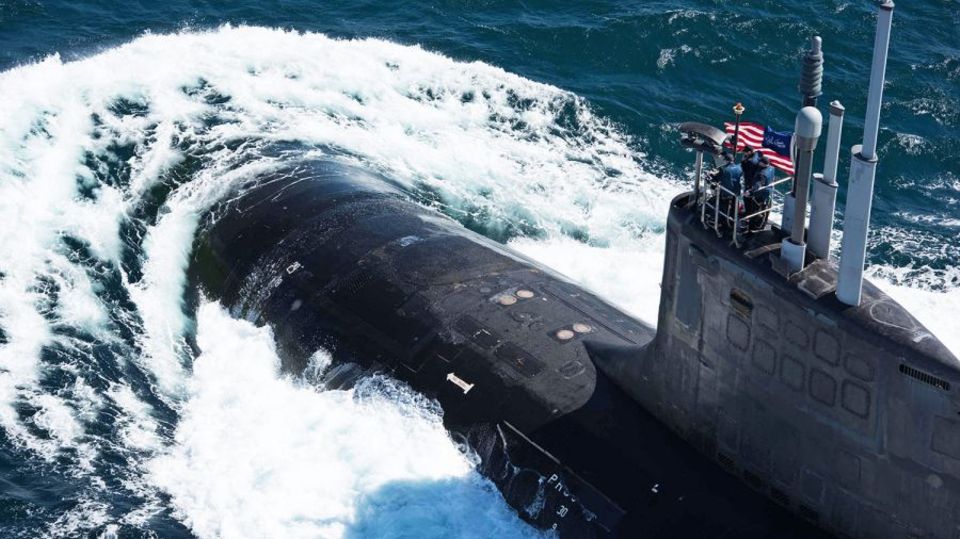The US says Russia has launched a device that can attack US satellites. Killer satellites are technically possible and Putin could particularly use them.
The US claims that Russia last week launched a satellite capable of attacking other satellites. “Russia has launched a satellite into low Earth orbit that we believe is likely to be a defensive space weapon,” said Pentagon spokesman Brigadier General Pat Ryder. It is in “the same orbit” as a US government satellite.
The Cosmos 2576 satellite is said to have been launched on May 16 from Russia’s Plesetsk Cosmodrome, about 800 km (497 miles) north of Moscow. The Russian space agency Roscosmos announced that the launch was “in the interests of the Ministry of Defense of the Russian Federation.”
Moscow and Washington accuse each other of wanting to militarize space. On Tuesday last week, Russian Foreign Ministry spokeswoman Maria Zakharova said that the US was trying to turn space into an “arena for military confrontations.” Military experts assume that military conflicts will be carried into space in the future.
The war in Ukraine shows the military importance of reconnaissance satellites and the American Starlinks system, through which the Ukrainian armed forces communicate and transfer data.
Back in late February, House Intelligence Committee Chairman Mike Turner suggested that the Russians might be developing an anti-satellite. The start at this point in time can therefore be seen in the context of the Ukraine War.
No peaceful space
Why is an anti-satellite so dangerous? Because space is teeming with so-called second-order weapons. Although the major powers have agreed not to station any weapons in space, they have agreed that this only means “weapons” in a very narrow sense. The communications and reconnaissance part of a military system is not considered a weapon here. If this logic were applied to an air defense system like the Patriot, only the missiles and their launchers would be “weapons”, but the communications systems and radar would not.
In a broader sense, numerous installations in space are “weaponized”, In addition to the purely military communications and spy satellites, there are also civilian facilities such as Starlink. Musk’s satellites are used for communication and target data coordination for the Ukrainian armed forces.
Civil and military communication is not possible without the network of satellites; the location of cars and rockets depends on them. Satellites and their reconnaissance capabilities on the ground are essential for modern wars. Precise ranged weapons require highly precise information. The peaceful sky isso “weaponized” (in the broader sense), that the actual weapons don’t work without help from above.
Defenseless in space
The great importance of military space architecture stands in stark contrast to its vulnerability. As long as a confrontation between the major military powers was unlikely, this made little difference. Poorly armed groups such as the Taliban did not even have anti-aircraft missiles, and near-Earth space was inaccessible to them. Only states with a space program have access to the exclusive club.
No satellite is equipped with any defensive measures. There is no armor, no ability to perform quick evasive maneuvers, and no mini-missiles that could shoot down an attacker. Because of the high speeds in space, a handful of steel pellets would shred any satellite if they hit it in the right trajectory.
An attacker would therefore have an easy time of it. But how exactly Putin’s satellite is supposed to work and whether it actually exists is currently completely unclear.
Great destruction
There is a paradox: the more sensitive the anti-satellite is, the more dangerous it becomes. More brutal variants would simply attack the US satellites, whether with steel balls, laser beams, small missiles or a directed electromagnetic pulse (EMP). In the worst and most unlikely scenario, the anti-satellite would be a special form of nuclear bomb. Their explosion would release a powerful EMP, this strike would then destroy the enemy’s electronics on the ground and in space.
If you dig deep enough into the history of nuclear deterrence, there are even worse horror ideas that could be launched into space via satellite. Like a bomb that immediately sets the atmosphere on fire.
Big impact
A different approach would be far more threatening: What if the Russians succeeded in sending a jammer into orbit. A device that leaves the US satellites unmolested but paralyzes their communications? In the strictest sense, this jammer would not be a weapon – just as spy satellites are not. It would not represent aggression in the formal sense, but would still render the US satellites useless.
The West has long made no secret of the fact that the USA is supporting Kiev with reconnaissance data in the war against Russia. This is considered help below the threshold of direct participation in the war. Many strikes deep behind the front would not be possible without this data. If the Russians can turn off the light on the US satellites, it would be a really serious blow for Kiev and the entire West.
The “Outer Space Treaty” by no means bans all weapons in space. Article IV simply states: All contracting states undertake “not to place objects carrying nuclear weapons or other weapons of mass destruction into Earth orbit, nor to equip celestial bodies with such weapons, nor to station such weapons in space.” Below the threshold of weapons of mass destruction and atomic bombs, everything is permitted, including an anti-satellite.
Worthwhile goals
Electronic warfare (EW – electronic warfare) is hardly noticed by the general public. Compared to jets and tanks, the devices are inconspicuous. Their performance is hidden; for the layperson, all that can be seen is a container filled with computers. The Ukraine war shows how important EW has become. There are countless reports about how deadly small drones are – very few address the role EW plays in drone warfare.
If one side manages to disrupt the other side’s drones, they will literally disappear from the sky and their own combat drones will have free rein. Another bitter truth: “Backward” Russia is often ahead in this high-tech war, and Ukraine – along with its Western supporters – is left behind.
The time when the military-civilian satellite landscape can work safely is coming to an end anyway. More and more countries are getting into missile technology, including North Korea. For them, the idea of fighting the US satellites with relatively little effort is tempting. This would be an opportunity to reduce the USA’s high-tech military potential to the level of the Cold War.




